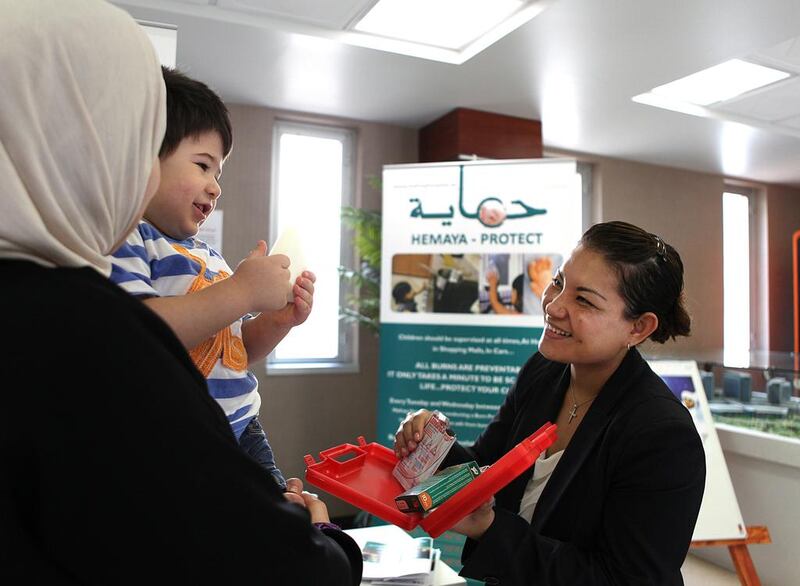ABU DHABI // Nearly a third of patients in a hospital’s burns unit are under 5, four fifths of those treated for scalding are children and nine out of 10 parents do not know how to apply first aid to burns.
The alarming figures prompted new warnings to parents on Monday to keep young children away from objects and substances in the home that can burn or scald.
“It is not just fire or hot objects like stoves or irons that children need to be kept away from, hot liquids are just as dangerous,” said Bunna Eng-Tusitala, manager of the burns unit at Mafraq Hospital in Abu Dhabi.
Of the 144 patients treated by the burns unit in 2013, 30 per cent were under the age of 5. Fifty per cent of injuries for all patients were caused by fire and 40 per cent were caused by hot liquids.
Dr Mohan Rangaswamy, a consultant plastic surgeon at the American Academy of Cosmetic Surgery Hospital, said much of his work involved treating children with burns.
He said children were naturally curious and did not understand that they must stay away from a hot object. They are also prone to accidents in the kitchen while following their mothers.
“Many times they are scalded by hot liquids such as tea, milk or bathing water. Often they touch irons and other hot objects,” said Dr Rangaswamy.
“Children should be forbidden from entering the kitchen and touching electrical items. Parents should be careful at barbecues as many children are burnt by hot embers that stick to their skin.
“Face and upper body burns are common among children as they often get burnt when they are reaching for a hot liquid.”
Because children have thinner skin than adults, burn injuries are often more serious: a minor burn for an adult is often a severe one for a child.
“Though deep burns hurt less than superficial ones, they are more dangerous as there is no skin in the area to start the process of recovery. People often don’t take deep burns seriously and this is a big mistake,” said Dr Rangaswamy.
Dr Saleh Saad, a consultant plastic surgeon at Rashid Hospital in Dubai, said more awareness campaigns were needed to educate parents about preventing burns.
He also thought parents needed to know more about how to administer first aid to their children.
“It is important to educate the parents so that they know what to do immediately in case of a burn,” said Dr Saad.
A survey by Mafraq Hospital found that nine out of 10 patients or parents of children being treated did not know how to treat burn injuries.
“Only around 10 to 15 per cent of the patients who have come to me have received proper first aid,” said Dr Rangaswamy.
He said in the event of a burn injury, the most important step was to immediately pour cold water on the affected area.
“It is the best thing you can do for the patient,” he said. “People go in search of cold water or ice but even cool water is fine. A bag of peas kept in the refrigerator or cold milk will serve the purpose.
“People often apply toothpaste on a burn but this is a myth. The menthol in the toothpaste may produce a cooling effect but the chemicals in it are not suitable to be used on burnt skin.”
Only in case of a burn caused by an electrical device should one refrain from exposing the burnt area to water until the device is removed, he said.
If the burn is caused by acid or a corrosive chemical, the area should be washed with plenty of water to remove traces of the chemical.
After first aid is performed, the patient should be taken to hospital straight away.
According to the World Health Organisation, burn injuries are the 11th leading cause of death in children between the ages of 1 and 9.
They are also the fifth most common cause of non-fatal childhood injuries.
arizvi2@thenational.ae







